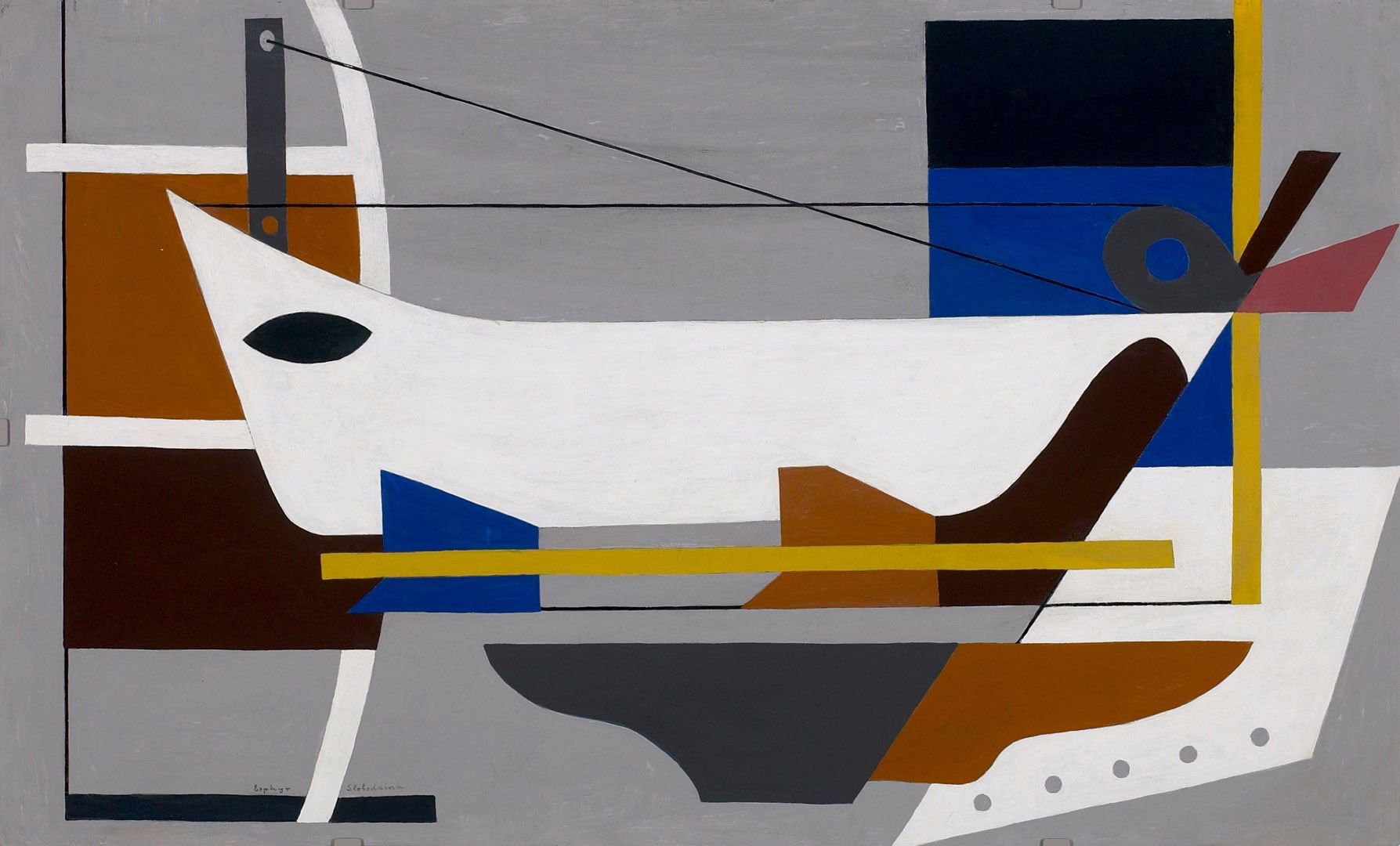Slobodkina made a more direct connection between painting and assemblage by creating sculptural reliefs.
In the late 1930s, she created two works, an assemblage on board titled Boat Construction from circa 1937 and her oil painting Boat Abstraction, executed between 1937 and 1938, the latter of which she submitted to the American Abstract Artist group’s second annual exhibition as evidence, in her own eyes, of a newfound control of painting.
It is significant that Slobodkina notes her mastery of painting at this pivotal time; 1938 is the year her divorce from Ilya Bolotowsky was finalized. Perhaps with the impending dissolution of the marriage, Slobodkina intended a transition away from Bolotowsky’s artistic influence as well.
In the brief years from 1936 to 1938, Slobodkina arrived at her mature style of abstract painting with shapes and forms in dynamic tension. Boat Abstraction exemplifies this with its painted elements, described as a “dinghy, surrounded with other forms vaguely evocative of rudders, pulleys, riggings, and even rivets.”
Slobodkina’s description of the abstract painting is laden with the materiality of the image’s real-life source. The connection between these two works cannot be overstated, and even the color chosen for the painting mirrors the orange and blue material adhered to the board of the assemblage.
Slobodkina often created collage maquettes for her paintings, an assemblage practice she seems to have pursued independently of Bolotowsky’s mentorship.
My name is Chelsea Pierce, and that was an excerpt from my essay, From Dreaming to Being: Self-Actualized Assemblage. To read the full essay, purchase a copy of the exhibition catalog Architects of Being: The Creative Lives of Louise Nevelson and Esphyr Slobodkina.

